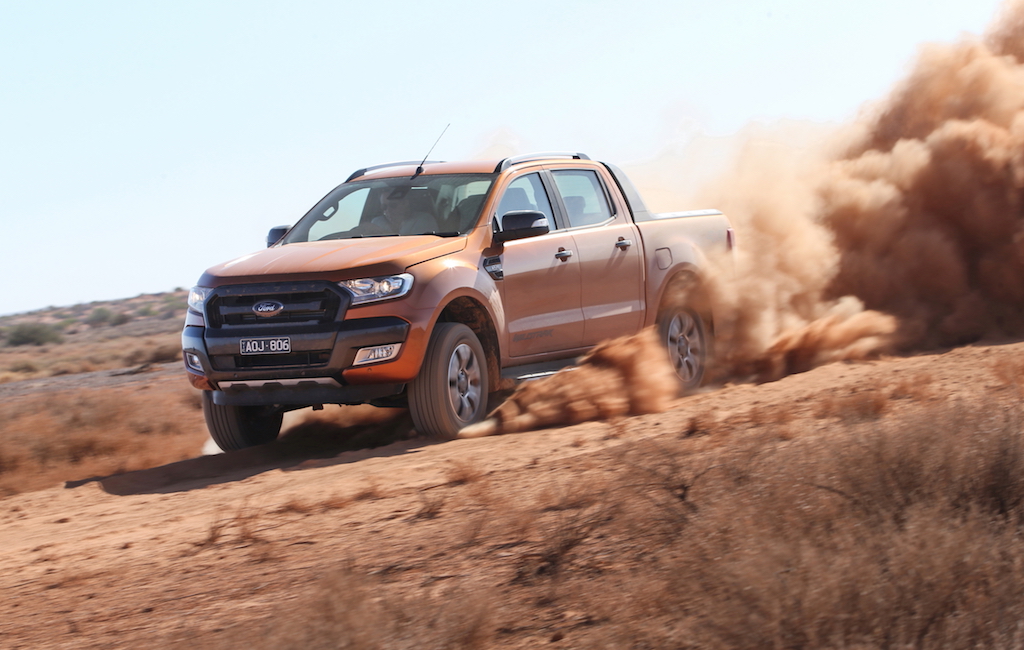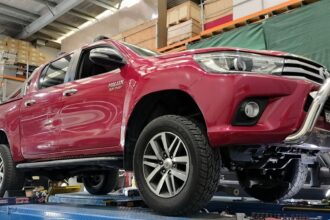The Ford Ranger is Australia’s best-selling 4X4 and when it comes to tuning there are plenty of options but here are our Top 5 Ford Ranger Performance Tips.
The Duratorq Diesel 3.2-litre five-cylinder found in the PX generation Ford Ranger has developed a reputation for being a tough nugget in the field and achieved this across a six-year model run. The 3.2L makes good torque, responds well to mods, and if treated properly will last a long time. No surprise then the engine and its inherent solid performance is one of the key reasons for the Ranger’s runaway sales success.
A quick scan around the web will show that there are a ton of modification options available for the Ranger to ‘make a good thing even better’. Some of these modifications work and some of them, well, if we’re being kind, let’s just say are not so effective. With that in mind let’s answer the question in every owner’s mind, ‘What are the top 5 performance tips for my 3.2?’
We’ve looked at the things that you should think about doing first, to improve performance (without affecting reliability or longevity) whether you’re towing or off-roading. Sure, there’s plenty more you can do with the Ranger’s 3.2L engine but our list will hopefully get you started on the right track.
1. Tweak the engine management system first
Start with the engine management system, we say. In fact, it really doesn’t matter which of the different 4X4 pickups/utes we are talking about, getting the ECU programming right is the biggest single thing you can do to improve the engine’s performance. But ECU programming can get confusing. Advertisements, testimonials, and general hype can overlook the basics you need to stick to with your Ranger. For a start make sure you have your Ranger tuned by someone that both has and uses a dyno. This is important as having a ‘one-size-fits-all’ approach with a ‘Car Park Tune’ (where a file is downloaded into your car, well, in a car park or somewhere similarly shonky) simply isn’t good enough. Also, steer away from cheap plug-in ‘chips’. While there are some good choices out there the rule-of-thumb to adhere to is that you aren’t going to get anything decent in terms of performance (and most importantly reliability) for under $1000. Budget this kind of spend to have your Ranger tuned properly, have it done on a dyno, and you really can’t go wrong.
Expected gains from tuning a Ranger 3.2L properly (dependant on other modifications of course) are in the order of 110 – 120Nm at the wheels between 2200 – 3200rpm and 20 – 25kW at the wheels. Power and torque gains like this, at the wheels, will have a huge impact on the way your Ranger performs and, when carried out correctly, will not change the reliability of the vehicle to the downside.
2. Keep the engine clean with a catch can
Anything you can do to keep oil out of the intake of your Ranger (or any internal combustion engine for that matter) is a good thing. The most accepted way of doing this is via fitment of a catch-can system. In short, the catch can sits between the crankcase breather for the engine (which is polluted with oil/fuel) and the inlet of the turbo (which is supposed to breathe clean air). The job of the catch can is to clean the air before it goes back in your engine. There are tons of different types of catch can out there. Some work really well, and others barely work at all. Talk to a variety of different workshops that actually perform work on Rangers rather than buying off an online parts store that in some instances will just sell, and rave about, whatever is in stock.
Things to look for with a catch can are the presence of an internal filter arrangement that is replaceable (or cleanable) over time, and general overall quality. Good product that works will normally make itself known by high quality fittings and properly moulded hoses. Be prepared to check the level of your catch can every few thousand kilometres and drain accordingly so that it doesn’t over-fill. And it can be worth checking out forums to see what results other Ranger owners have had.
3. Upgrade the Ranger’s intercooler for performance under pressure
Next on the upgrade list is the factory-fitted intercooler. On the Ranger it’s fairly small and with fragile plastic end tanks; there have been numerous cases of Ranger intercoolers failing over the years on otherwise standard vehicles. Looking for a quality upgraded intercooler kit then is a great idea. A properly designed Ranger intercooler system will not add a great deal of power or torque to the 3.2L, but what it will do is keep peak power and torque available under extreme conditions. Upgraded intercoolers are designed to reject heat better through their core design, and to reduce pressure loss during the cooling process. Don’t believe claims of up to 20% power gains just from changing the intercooler as it simply doesn’t work that way.
The best thing to do is to look at companies that have a proven testing schedule for their product and supply actual real-world data. Also if you can make sure your intercooler kit comes with all new piping and high quality clamps. The piping is another weakness of the Ranger’s factory setup and if you address it at the same time as you upgrade the intercooler performance when the thing is being driven in anger will be improved or, rather, maintained.
4. Yes, you should still fit a new exhaust system but it’s not about power
In previous Ranger tech pieces, we have noted that changing the exhaust system doesn’t ever really equate to a lot of power or torque being gained. Even with the later DPF equipped PX2 there really isn’t a lot in changing exhaust systems in pure technical terms other than dropping the EGT readings slightly under some conditions. Where an upgraded exhaust comes into its own on the Ranger is with a much improved exhaust note. Yes, that’s right, a diesel that sounds good. The Ford Ranger is probably one of the only mass-production small-capacity diesel engines that sounds great with an open exhaust. You can thank the engine designers for that; that off-beat five-cylinder throb gives the Ranger a nice throaty growl reminiscent of a Petrol V10 (yes, we’re serious) when the exhaust is opened up.
5. Upgrade the turbocharger
Upgraded turbochargers on the Ranger are more often a matter of need than want. While the PX1 had a GT22 cast compressor turbocharger the PX2 moved to a smaller GT20 that, in some instances, is prone to premature failure. It’s not unusual to hear stories of tuners pumping too much boost into the PX2 resulting in a turbo that first turns noisy (sounds a bit like a police siren) then eventually fails altogether.
Both PX1 and PX2 turbochargers can be upgraded with larger than standard billet compressor wheels which give them much greater flow capability – and if you are in that familiar boat of ‘the failing Ranger turbo’ then it would be madness not to consider upgrading the turbocharger which is normally the same cost as a standard-sized item.
To get the best out of an upgraded turbocharger you will need ECU tuning to suit. Just bolted into place with no fuelling or commanded boost increases you will only see factory level power from an upgraded turbo. When you have the ECU tuned to match then you should expect an extra 20 – 30Nm higher in the rev range, and up to another 20kW on top of what you already have.
Do I need to service my modified vehicle more regularly?
So how often do you need to service your ‘performance-upped’ Ranger? The reality is that with normal use you can follow normal service guidelines. You shouldn’t need to make any special considerations providing your vehicle isn’t operating under extreme conditions outside of those the manufacturer had in mind when setting the service intervals. You should also make clear your list of modifications to your chosen service centre. For example if you don’t tell them you have a catch can installed then don’t be surprised if they don’t clean/replace the filter and empty the unit. Our best advice with any performance modified 4X4 is to stick to the lower side of the service schedule. If it recommends an oil change every 7000km or so then make sure that’s what you do.
Will my modifications affect my vehicle’s warranty?
Depending on who you talk to, modifying your vehicle will either void your vehicle’s factory warranty and insurance immediately or not. Fortunately, the truth is the latter. Sort of. Confused? Don’t be. As long as your vehicle has been modified with a part that’s fit for purpose and meets relevant Australian Design Rules or Australian Standards then your vehicle’s warranty won’t be void. If the installed part fails or causes a problem with the vehicle as a result of the modification, then the problem will be covered by either the part manufacturer or the fitter’s warranty.
What about insurance?
No matter who you insure your vehicle with, make sure you let them know of any modification made to your vehicle.









